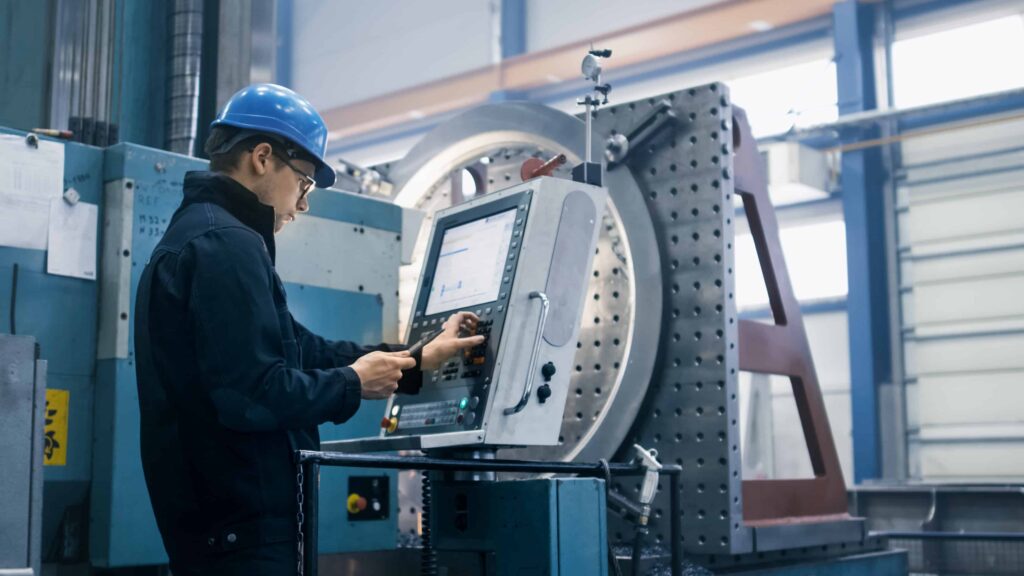Investing in a CNC turning center machine is a crucial decision for any manufacturing business. Choosing the right machine can significantly impact your production efficiency, machining accuracy, and overall product quality. This article will guide you through the key features to consider when selecting the best CNC turning center machine for your needs.
This article will detail the key features to focus on when purchasing a CNC turning center.

1. Spindle Power and Speed Range
The spindle is the core of any CNC turning center, responsible for rotating the workpiece at various speeds.
- Spindle Power: Higher horsepower means the machine can efficiently cut harder materials like stainless steel, titanium alloys, or hardened steel without stalling.
- Speed Range (RPM): It is recommended to choose a machine with a wide speed range (e.g., 50 to 5000 RPM or higher) to handle different materials and workpiece sizes, balancing machining speed and surface finish.
- Machines equipped with Variable Frequency Drives (VFD) enable smooth speed transitions, reducing vibration and tool wear.
- The spindle’s thermal stability ensures consistent performance during long production runs, minimizing errors caused by thermal expansion.
2. Number of Axes and Live Tooling
Basic CNC turning centers typically have two axes: X (radial) and Z (axial). However, multi-axis turning centers have become increasingly common as machining demands grow.
- Y-axis and C-axis: Adding a Y-axis allows for off-center milling, drilling, and complex contouring without removing the workpiece.
- Live tooling: Independent rotating tools mounted on the turret support milling, drilling, tapping, and other operations, reducing setup changes and improving precision.
- Multi-axis and live tooling capabilities enable CNC turning centers to perform multifunctional machining, suitable for complex parts and high-precision requirements.
3. Tool Magazine Capacity and Tool Change Speed
Tool magazine capacity directly impacts production efficiency.
- Larger turret capacities (12, 16 tools or more) allow the machine to preload more tools, reducing downtime during automatic tool changes.
- Fast Automatic Tool Changer (ATC) systems improve operational efficiency.
- Confirm that the turret supports all necessary tool types for your operations (turning, milling, drilling, boring, etc.).
- Some models feature dual turret systems for simultaneous machining tasks, effectively doubling productivity.
4. CNC Control System and User Interface
The CNC control system governs machine operation, directly affecting ease of use and machining accuracy.
- Important features to look for include:
- User-friendly programming interface, supporting conversational programming or G-code input.
- Machining simulation to detect program errors before actual cutting.
- Support for remote monitoring and diagnostics to facilitate preventive maintenance and troubleshooting.
- Integration capability with Industry 4.0 smart factory systems for data analysis and process optimization.
5. Machine Structure and Stability
Machine structure influences machining accuracy and machine lifespan.
- Choose models with high-quality cast iron or steel beds to absorb cutting vibrations and ensure stable machining.
- Box-way guides typically offer better rigidity and load capacity than roller or linear guides.
- Machines with thermal compensation systems reduce dimensional errors caused by temperature changes.
- A stable machine structure delivers smoother surface finishes, longer tool life, and lower scrap rates.
6. Automatic Bar Feeder and Material Handling
For high-volume automated production, an automatic bar feeder is essential.
- Verify whether the turning center is compatible with automatic bar feeders for continuous raw material supply.
- Automatic feeding reduces manual loading, increasing machine uptime and productivity.
- Some machines also come with chip conveyors and cooling systems to keep the machine clean and extend tool life.
7. Safety Features and Compliance
Operating high-speed machines safely is critical.
- Essential safety features include:
- Multiple accessible emergency stop buttons.
- Safety guards and interlocks to prevent entry into hazardous zones.
- Compliance with relevant industrial safety standards such as CE and OSHA.
- High-end models may include light curtain safety devices that automatically stop the machine if personnel enter danger areas.
Conclusion: How to Choose the Right CNC Turning Center
When purchasing a CNC turning center, consider your production needs, material types, part complexity, and budget comprehensively. Prioritize machines with powerful spindles, flexible axes, suitable tooling configurations, and mature, stable control systems. Automation compatibility and safety features are also important factors.
Understanding these key features will help you make an informed decision, ensuring your equipment consistently improves production efficiency and machining quality for years to come.

